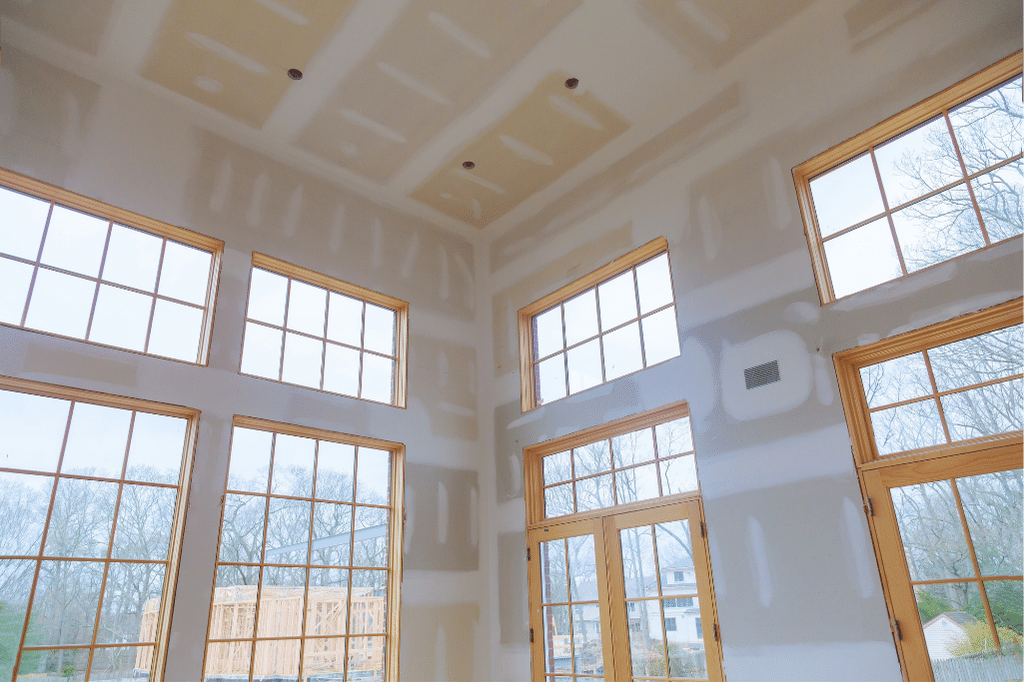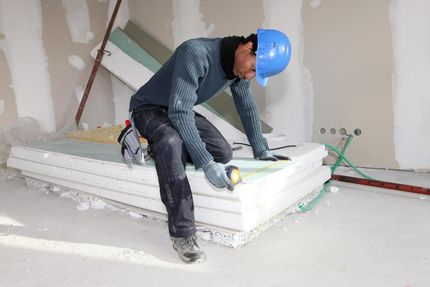Drywall Installment Made Easy: Tips for Perfect Outcomes
Drywall setup is often perceived as a daunting job, yet with the appropriate approach and understanding, it can end up being a convenient undertaking. Selecting high quality products and preparing the setup area are essential initial steps that establish the foundation for success. Grasping methods for reducing, hanging, and completing drywall can substantially influence the result. As we explore these necessary ideas, you may discover that even the smallest modifications in your approach can bring about extremely boosted results, leaving you to consider exactly how these techniques can change your next task.
Picking the Right Materials
Selecting the ideal materials for drywall installment is critical to achieving a sturdy and visually pleasing coating. drywall installation. The primary element, drywall sheets, normally can be found in various densities, with 1/2-inch sheets being common for indoor wall surfaces. For areas needing additional wetness resistance, such as washrooms or cooking areas, think about using eco-friendly board or cement board, which are specially designed to hold up against moisture

Furthermore, picking the ideal bolts-- either screws or nails-- is vital for protecting the drywall to the framing. Drywall screws are normally favored for their holding power and reduced danger of popping. Think about the finishing touches such as primer and paint, which not just enhance the appearance however also safeguard the drywall from wetness and wear.
Preparing the Installation Area
Before beginning the drywall installation process, it is vital to prepare the installation area completely. This prep work entails numerous vital actions to guarantee a smooth and successful job. Clear the location of any furniture, devices, or blockages that could impede access. A tidy workspace minimizes the threat of damage to existing items and permits efficient motion during setup.
Following, examine the walls and ceiling for any blemishes, such as splits, holes, or mold. Address these concerns in advance; spot any damages and allow enough time for repair services to dry. In addition, ensure that electric outlets, switches, and plumbing are appropriately positioned and represented, as this will impact drywall placement.
Take into consideration the environmental conditions. A steady temperature level and moisture degree are vital for ideal attachment and performance of the drywall materials. If essential, utilize a dehumidifier or heating system to create appropriate problems.
Trimming and Hanging Drywall
The key to efficient drywall setup lies in the exact cutting and dangling of the panels. Make use of a straight side and an energy blade to rack up the drywall along your measurements, after that snap it along the racked up line for a clean break.

Always function from the top down and delegated right, making certain that you maintain a staggered pattern to boost security. Effectively hanging the drywall sets the foundation for a smooth coating, ultimately resulting in exceptional lead to your drywall job.
Insulation and Mudding Methods
While appropriate cutting and hanging of important source drywall sets the phase, the following important action includes grasping taping and mudding strategies more helpful hints to make sure a seamless finish. Insulation is essential for strengthening joints and preventing cracks; it entails embedding tape into the applied joint compound (mud) Start with a top quality fiberglass or paper tape, using the tape over the joint and pushing it into the wet mud using a taping knife, making certain no air bubbles stay.
When the tape is in location, use a slim layer of joint substance over the tape, feathering the edges to develop a smooth transition to the drywall surface. Allow this layer to completely dry totally prior to sanding it gently to remove flaws. Repeat this process, using additional coats of mud as required-- commonly a couple of layers-- while slowly broadening the application area with each layer to attain a seamless look.
After the final layer dries, sand the surface area with a fine-grit sandpaper up until smooth. drywall fort worth. Remember to put on a mask during fining sand to stay clear of inhaling dust fragments. Understanding these taping and mudding techniques is crucial for attaining a professional-quality coating in your drywall installation
Ending Up Touches for Perfection
Attaining a remarkable drywall setup surpasses taping and mudding; it finishes in the completing touches that boost the general appearance. These last actions are essential in guaranteeing a professional-grade coating that boosts the appearances of your area.
Begin by sanding the dried joint compound to produce a smooth surface. Make use of a fine-grit sandpaper and a sanding block or pole sander for optimum control. Pay specific attention to sides and edges, as these areas often tend to call for even more meticulous job. After fining sand, clean down the walls with a moist fabric this contact form to remove any kind of dust bits, ensuring a clean surface for paint.
Following, apply a guide specifically developed for drywall. This action is important, as it helps secure the joint compound and offers an uniform base for the topcoat. Once the guide dries, inspect for any kind of flaws, and touch up as needed.
Final Thought
In final thought, successful drywall setup pivots on the careful selection of products, thorough preparation of the installation location, and exact execution of cutting and hanging techniques. Mastery of taping and mudding processes is crucial for accomplishing a smooth coating.
Drywall installment is frequently perceived as a challenging job, yet with the appropriate method and knowledge, it can become a convenient undertaking.Picking the suitable materials for drywall setup is critical to attaining a long lasting and aesthetically pleasing surface.Prior to beginning the drywall setup procedure, it is important to prepare the installment location extensively. Grasping these taping and mudding methods is critical for achieving a professional-quality surface in your drywall installment.
In conclusion, effective drywall setup hinges on the cautious choice of products, complete prep work of the installation location, and exact implementation of reducing and hanging methods.